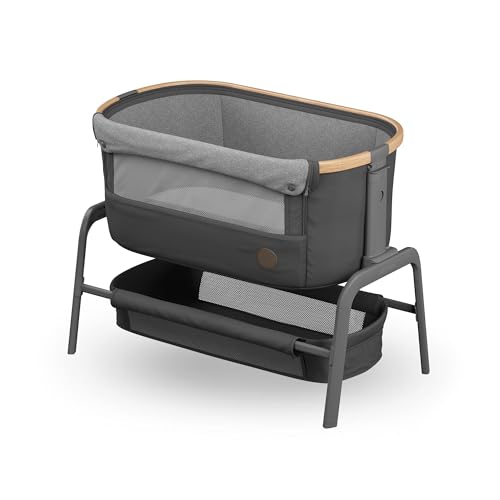The Importance of Bedside Cots for Infants: A Comprehensive Guide
As new parents start their parenting journey, they are faced with a myriad of options concerning their infant's sleep arrangements. Amongst these options, the bedside cot stands out for its myriad of advantages. This post explores the significance of bedside cots, discusses their benefits and disadvantages, responses regularly asked concerns, and includes a relative table to help parents make notified choices.
What Is a Bedside Cot?
A bedside cot is a sleep space developed to be put beside the parents' bed, enabling easy access to the infant during the night. These cots include adjustable height settings, enabling them to line up with the height of the adult bed. Often, cots4tots can be attached securely to the bed or stay nearby, providing a safe yet available sleep environment for the baby.
Types of Bedside Cots
- Co-Sleeping Cots: These cots attach safely to the parents' bed, allowing for close proximity while making sure the baby has their own safe sleeping space.
- Freestanding Cots: These are located next to the bed however do not attach straight. They still use a convenient reach for feeding and reassuring.
- Portable Cots: These cots are lightweight and created for travel, often including foldable designs and easy-transport capabilities.
Advantages of Using a Bedside Cot
Bedside cots offer several benefits that can enhance both the infant's sleep experience and the parents' assurance. These include:
1. Enhanced Safety
According to the American Academy of Pediatrics (AAP), having the infant sleep in the exact same room as parents, without sharing the same sleeping surface area, substantially decreases the threat of Sudden Infant Death Syndrome (SIDS). A bedside cot provides a safe space while preserving proximity.
2. Easier Nighttime Care
When a baby is within arm's reach, feeding, diaper changes, and comforting becomes a lot more convenient. Parents can quickly soothe their infant without totally waking from sleep or leaving the bed.
3. Support of Bonding
The close proximity provided by a bedside cot motivates bonding during nighttime feedings or reassuring. This can promote a complacency for the infant and help develop stronger emotional connections.
4. Space-saving Design
Lots of bedside cots are developed to be compact, making them perfect for small home where a full-sized crib may not fit. They can be easily moved or saved when not in use.
5. Versatile Functionality
Most bedside cots can be changed in height and typically include detachable sides, making them versatile for different uses as the child grows or household requires change.
Downsides of Bedside Cots
Regardless of their advantages, there are some disadvantages to think about when choosing a bedside cot:
1. Minimal Lifespan
Bedside cots generally have a shorter life expectancy than basic cribs, typically accommodating infants only approximately a specific weight or height. Parents may require to shift to a complete crib earlier than expected.
2. Stability Concerns
If not firmly connected or effectively positioned, a bedside cot might position security issues. Parents must make sure that the cot is stable and well-aligned with the bed.
3. Modification Period
Some infants may take some time to get used to sleeping in a cot, particularly if they are used to closer contact. Parents might require to be patient as their child adapts.
How to Choose the Right Bedside Cot
When picking a bedside cot, parents should consider the following criteria:
- Safety Standards: Ensure the cot complies with all safety policies.
- Adjustability: Look for height-adjustable features that align with your bed.
- Construction Material: Choose a cot that is strong and made from non-toxic materials.
- Reduce of Use: Opt for styles that allow for one-handed operation when accessing the infant.
Table: Comparison of Popular Bedside Cots
| Feature | Co-Sleeping Cot | Freestanding Cot | Portable Cot |
|---|---|---|---|
| Attachment to Bed | Yes | No | No |
| Adjustability | Yes | Yes | Yes |
| Travel-Friendly | No | No | Yes |
| Life-span | 6-12 months | 18-24 months | 0-12 months |
| Price Range | ₤ 150-₤ 300 | ₤ 100-₤ 250 | ₤ 50-₤ 150 |
Frequently Asked Questions (FAQs)
1. Are bedside cots safe for my baby?
Yes, when utilized correctly and according to security requirements, bedside cots are safe for infants. It is vital to guarantee that the cot is safely located and does not posture any danger of falling.
2. At what age can I shift my baby from a bedside cot to a crib?
The majority of parents shift their baby from a bedside cot to a crib in between 6 months and two years, depending upon the infant's growth and comfort level.
3. Can I use a bedside cot for twins?
While some bedside cots are designed to accommodate more than one child, a lot of are planned for single infants. Parents of twins may need to think about utilizing different cots.
4. How do I preserve my bedside cot?
Regular cleaning, examining for wear and tear, and guaranteeing that all components, such as safety straps and bed mattress, are in good condition, can help keep your bedside cot.
Picking the right sleep plan for an infant is one of the numerous choices that new parents face. A bedside cot provides unparalleled convenience and safety while permitting close adult interaction. Understanding the benefits, disadvantages, and features of bedside cots can empower parents to make the right option for their household's requirements. By weighing these aspects along with security precautions, parents can develop a nurturing sleep environment for their kids.

